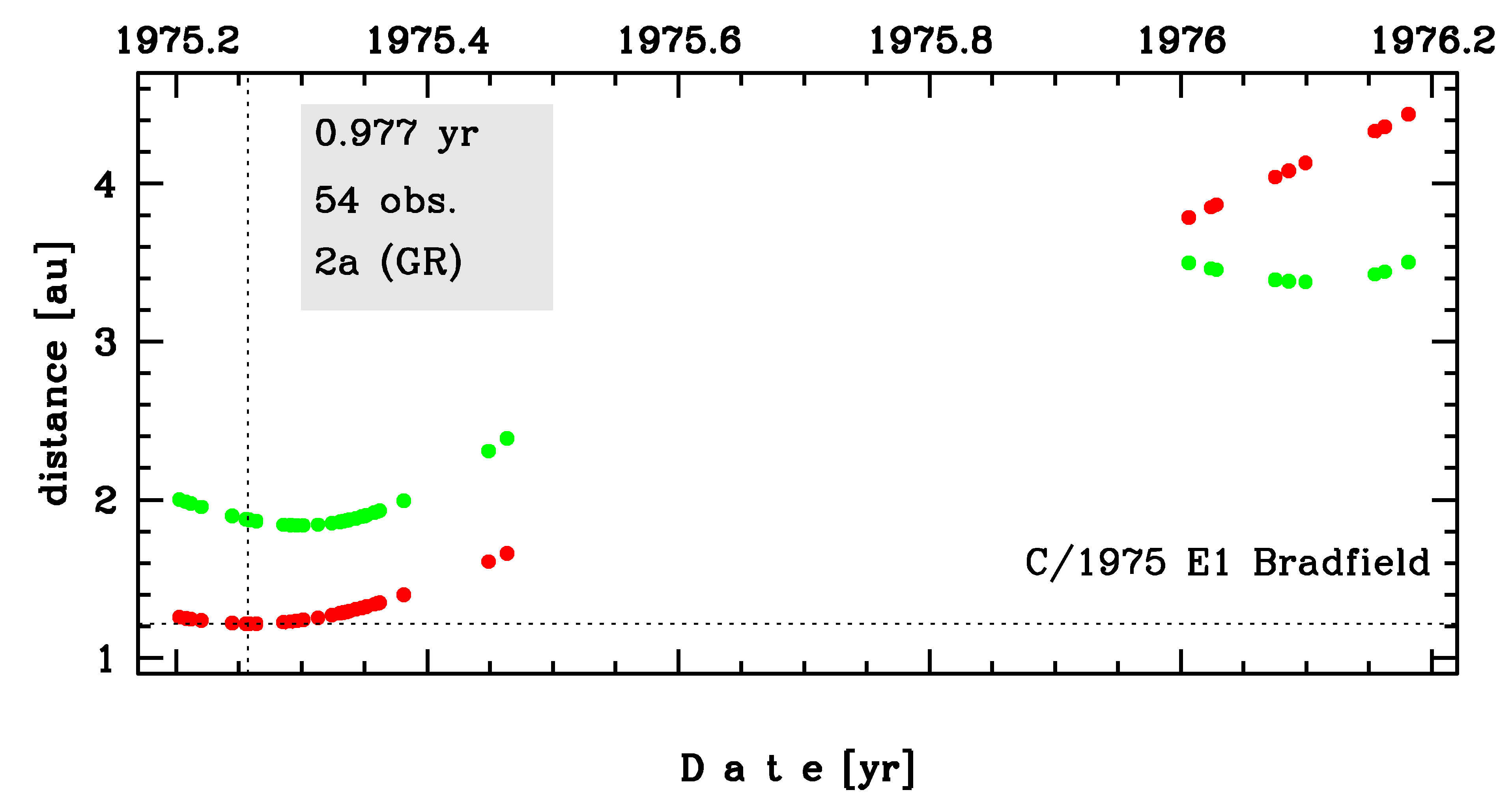C/1975 E1 Bradfield
more info
Comet C/1975 E1 was discovered on 12 March 1975 by William A. Bradfield (Dernancourt, South Australia, Australia), that is about 3 weeks before its perihelion passage.This comet was observed until 5 April 1976. [Kronk, Cometography: Volume 6].
Comet had its closest approach to the Earth on 19 April 1975 (1.838 au), about 2 weeks after its perihelion passage.
Solution given here is based on data spanning over 0.977 yr in a range of heliocentric distances: 1.26 au – 1.217 au (perihelion) – 4.44 au.
This Oort spike comet suffers large planetary perturbations during its passage through the planetary system; these perturbations lead to escape the comet from the solar system on hyperbolic orbit.
See also Królikowska 2020.
Comet had its closest approach to the Earth on 19 April 1975 (1.838 au), about 2 weeks after its perihelion passage.
Solution given here is based on data spanning over 0.977 yr in a range of heliocentric distances: 1.26 au – 1.217 au (perihelion) – 4.44 au.
This Oort spike comet suffers large planetary perturbations during its passage through the planetary system; these perturbations lead to escape the comet from the solar system on hyperbolic orbit.
See also Królikowska 2020.
| solution description | ||
|---|---|---|
| number of observations | 54 | |
| data interval | 1975 03 15 – 1976 03 07 | |
| data type | significantly more measurements after perihelion (POST+) | |
| data arc selection | entire data set (STD) | |
| range of heliocentric distances | 1.26 au – 1.22 au (perihelion) – 4.44 au | |
| detectability of NG effects in the comet's motion | NG effects not determinable | |
| type of model of motion | GR - gravitational orbit | |
| data weighting | NO | |
| number of residuals | 108 | |
| RMS [arcseconds] | 1.54 | |
| orbit quality class | 2a | |
| orbital elements (heliocentric ecliptic J2000) | ||
|---|---|---|
| Epoch | 1975 04 18 | |
| perihelion date | 1975 04 04.57927555 | ± 0.00130219 |
| perihelion distance [au] | 1.21693964 | ± 0.00000823 |
| eccentricity | 1.00140497 | ± 0.00003100 |
| argument of perihelion [°] | 264.129797 | ± 0.001145 |
| ascending node [°] | 157.908831 | ± 0.000156 |
| inclination [°] | 55.243869 | ± 0.000143 |
| reciprocal semi-major axis [10-6 au-1] | -1,154.51 | ± 25.47 |
